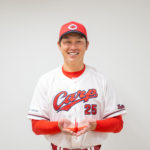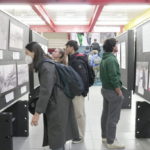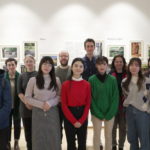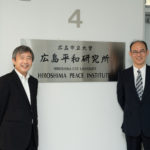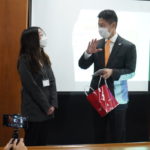Preventing a Repeat of the Tragedy: A Closer Look at the Exhibition
“A Blank in the Weather Map: The Hiroshima of the Weather Experts”
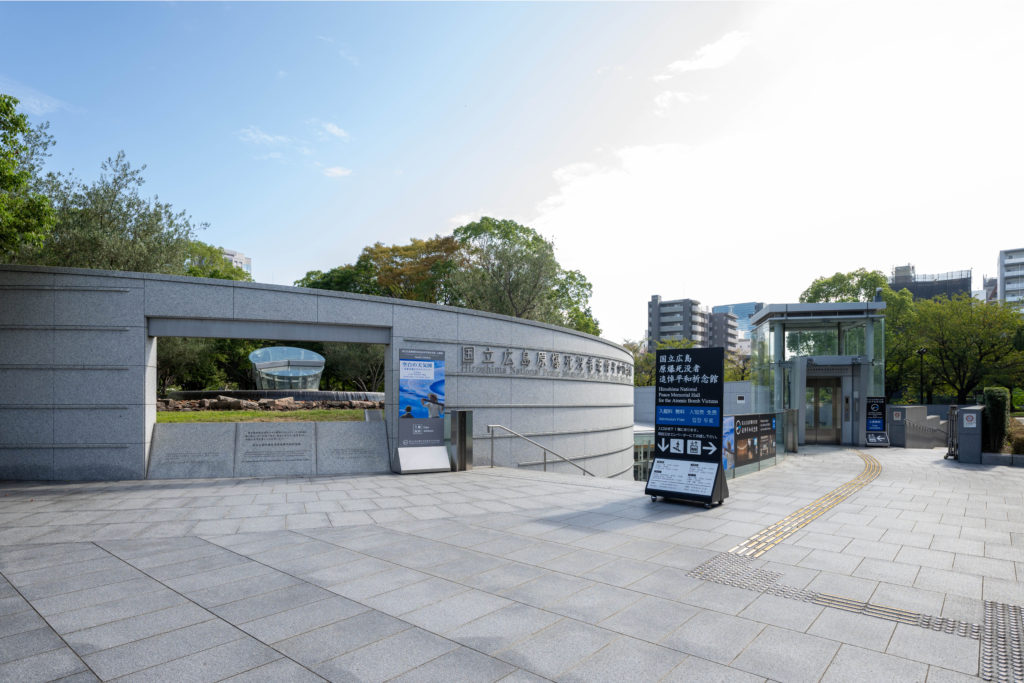
The Hiroshima National Peace Memorial Hall for the Atomic Bomb Victims is located in the Peace Memorial Park, east of the Cenotaph for the Atomic Bomb Victims. It was established in August 2002 to collect, organize, and display portrait photos of A-bomb victims as well as the memoirs and accounts of those exposed to the atomic bomb.
The entrance is marked by a monument showing “8:15 a.m.,” the time when the atomic bomb was dropped, and surrounded by fountains set up to mourn those who died while searching for water. There is also a space designated for peace prayers and mourning the dead where the cityscape following the atomic bombing has been reproduced using 140,000 tiles, the same number as the total number of A-bomb victims (*as of the end of December 1945), as well as a Memorial Corner featuring the portrait photos and names of the victims. The Memorial Hall was established with the goals of commemorating the A-bomb victims, raising awareness of the horrors of the atomic bombing around the world, and passing on first-hand accounts of the atomic bombing to future generations.
The exhibition room located on B1F of this facility features a different theme each year, on the basis of which items are selected from those mentioned in the many existing accounts of the atomic bombing and introduced in a 30-minute video. An exhibition showcasing materials closely related to these accounts is also held. “A Blank in the Weather Map: The Hiroshima of the Weather Experts” (held from March 15th, 2023, to February 29th, 2024) is an exhibition based on the non-fiction novel Kuhaku no Tenkizu (A Blank in the Weather Map) by non-fiction writer Yanagida Kunio, who is supervising the exhibition. The exhibition outlines the efforts of the meteorological office personnel who made every effort under the difficult circumstances immediately after the atomic bombing to continue doing their job in line with the belief that those in charge of weather observation must constantly record changes in weather phenomena over time. It also touches on the Makurazaki Typhoon, which hit Hiroshima just one month after the bombing.
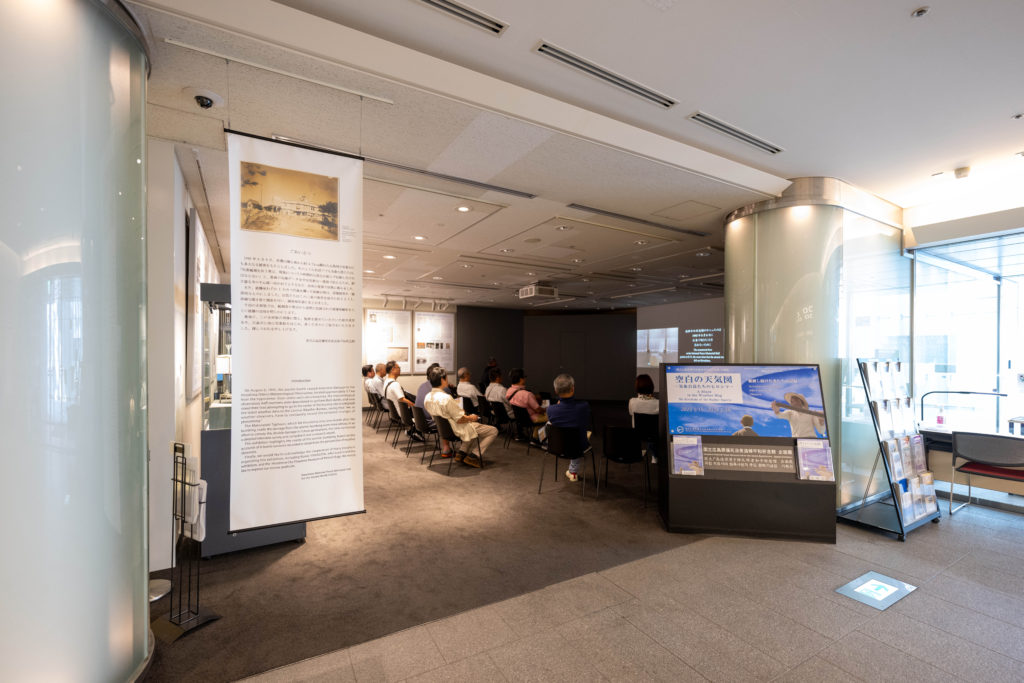
The exhibition room can be found on the left after passing the Memorial Corner and going up the escalator.
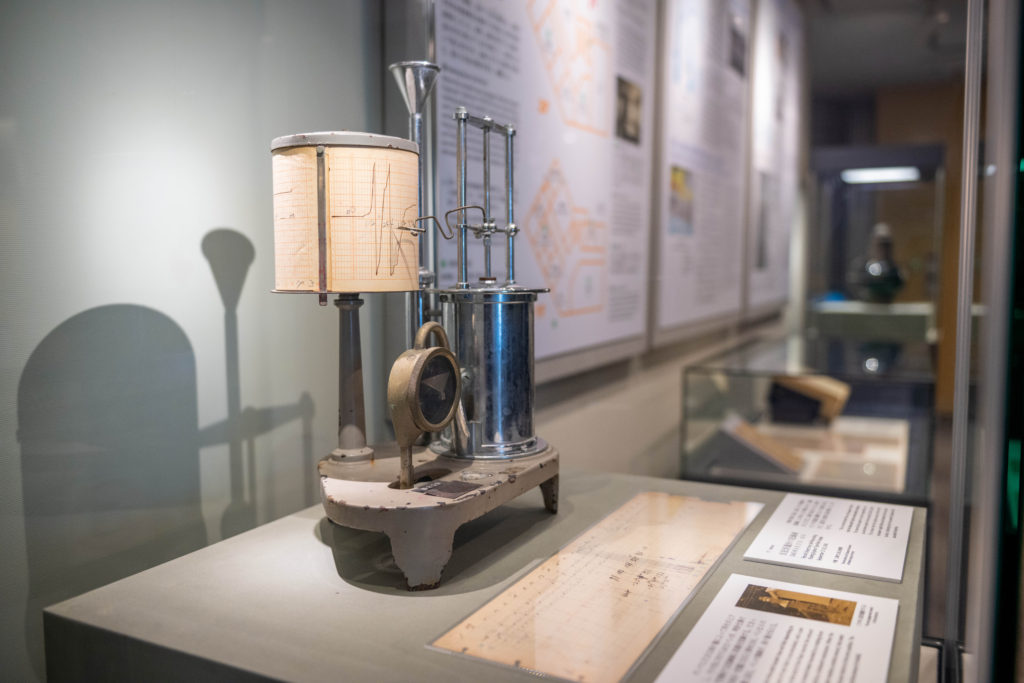
Weather observation equipment (such as rain gauges) from that period is displayed in the exhibition room.
Hashimoto Isao, the curator overseeing the exhibition, points out, “The Makurazaki Typhoon hitting the city of Hiroshima after the atomic bombing made it a twofold disaster. It is said that the damage was exacerbated by the fact that the bombing had severed the communication networks and prevented weather information from being received within the city. We planned this exhibition by framing everything happening at the time, including this, as part of the truth about the atomic bombing.”
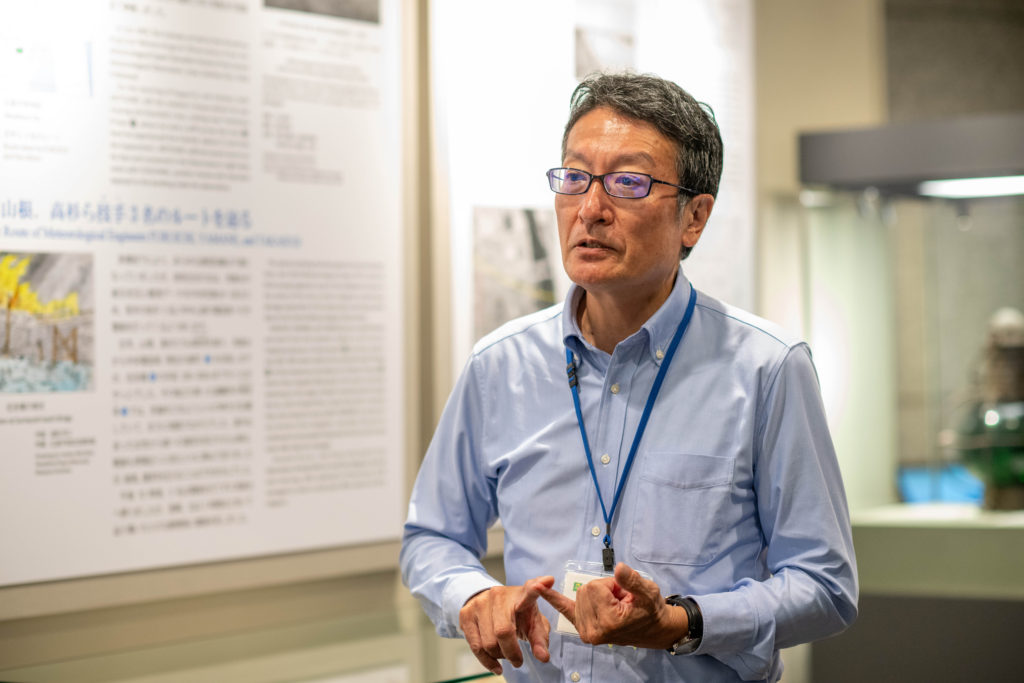
Curator Hashimoto Isao joined the Hiroshima National Peace Memorial Hall in 2019. He is involved in the production of videos for exhibitions, as well as the collection of photos, accounts, and memoirs of A-bomb victims.
Videos are screened throughout the year at the pace of one video per year, and it took around two years to prepare for this exhibition. “We start by asking the bereaved family members of A-bomb victims who have written accounts of their experiences for permission to widely publicize these accounts at the exhibition. We then explain to them our purpose for holding this exhibition and what we hope to convey. Some bereaved families are reluctant to publicize the accounts, as they might not want these accounts to be shared publicly or want people to know that they are a family member of an A-bomb victim. Of course, we cannot force them to grant us permission, but we patiently explain to them how valuable these first-hand accounts are as lessons for those of us living today and for future generations,” says Hashimoto. He also describes cases in which even the bereaved family members of A-bomb victims have passed away, which is deeply regrettable as these valuable accounts could have been shared with more people had they been approached earlier.
The video screened at this exhibition features the first-hand accounts of many related parties, including Fukuhara Kenji, a member of the Hiroshima Local Meteorological Office at the time and a student in the main program of the Meteorological Engineering Training School. The video captures in detail the moment the atomic bomb was dropped, the condition of the meteorological office at the time, the horrific physical condition of his colleagues exposed to the atomic bomb, and Fukuhara’s desperate search for his lost sister. Hashimoto notes that they were only able to depict the event in such a realistic manner thanks to these first-hand accounts, and that being faithful to the original text of the accounts remained their top priority in the course of production.
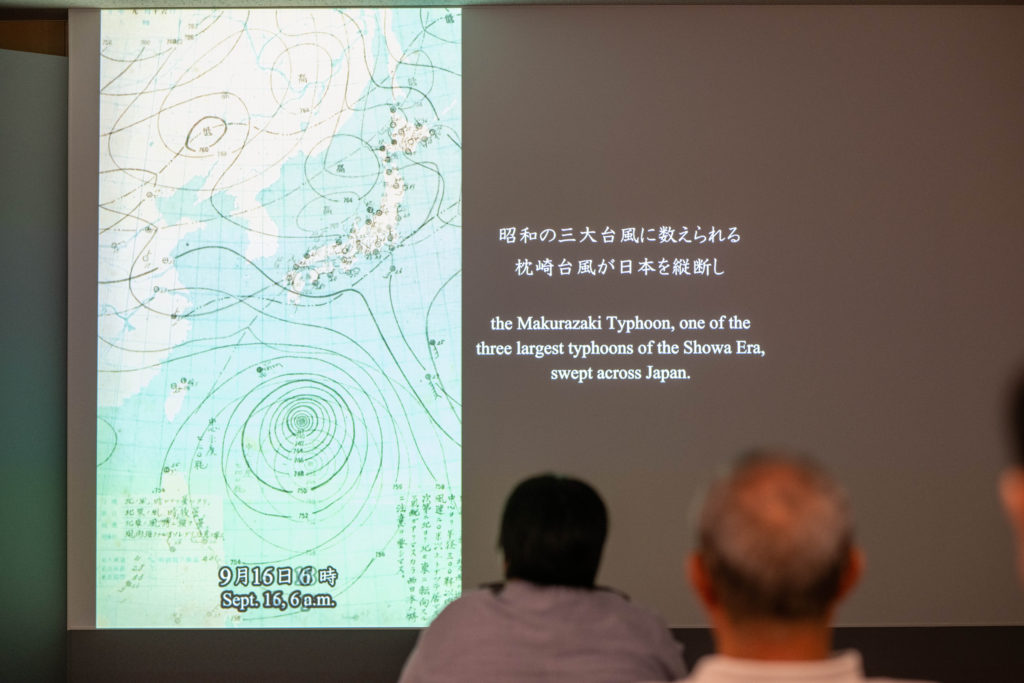
Since the first-hand accounts are at the core of the video, all subtitles are placed in the center of the screen.
The video is narrated by actor Kishibe Ittoku and Katsumaru Kyoko, a weather forecaster at the NHK Hiroshima Broadcasting Station. “We consider it highly significant that Ms. Katsumaru, a local weather forecaster, served as narrator for the video. Besides conveying the truth about the atomic bombing, the video also grapples with the theme of a twofold disaster reminiscent of the nuclear power plant disaster that occurred after the Great East Japan Earthquake. Given the recent spate of natural disasters, we hope that this video provides an opportunity for people to reflect on these disasters in a way that is more relevant to them.”
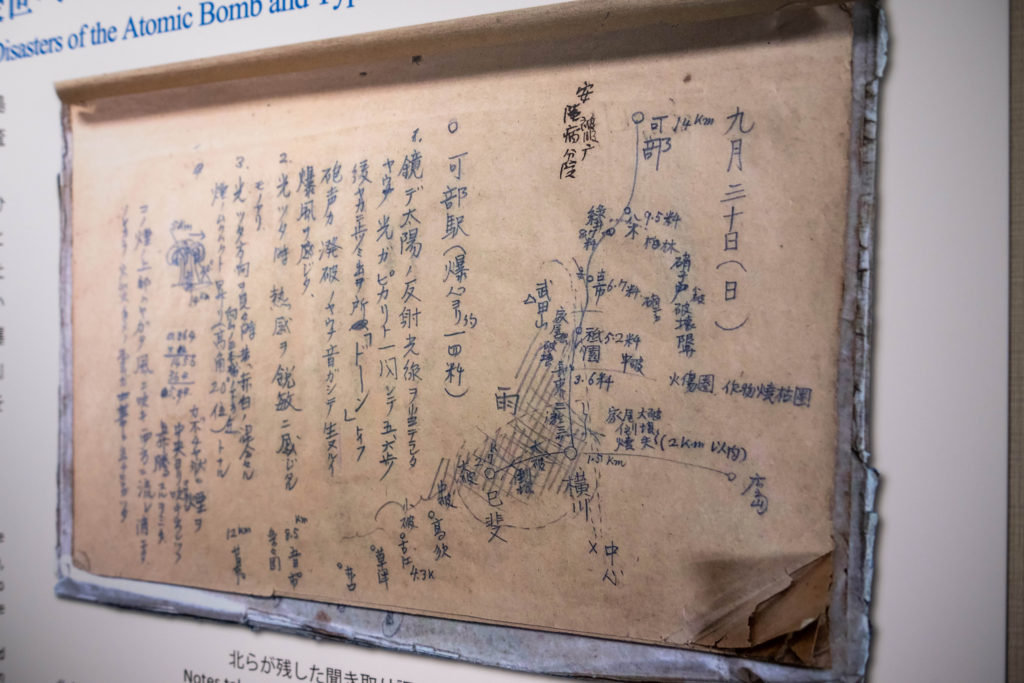
These study notes were penned by Kita Isao, a member of the meteorological office, and others. They contain detailed descriptions of the immediate aftermath of the atomic bombing.
One visitor to the exhibition remarked, “Even though I live in Hiroshima, I never knew such a wonderful facility existed until now. The video was very realistic and moving, and I hope more people can see it,” while another commented, “I visited this facility because I wanted to learn more about my grandparents’ past. I’m really glad I came because I discovered many things that I never knew before, and it made me think more deeply about war and peace.” The comment book was filled with many thoughts and impressions of visitors written in foreign languages, a clear sign that the facility has attracted many visitors from both within Japan and abroad in pursuit of peace.
“We ultimately only aim to do one thing. We hope to offer our deepest condolences to as many A-bomb victims as possible while conveying the truth about the atomic bombing so as to bring peace to the world,” explains Hashimoto. “The tools to achieve this include the valuable first-hand accounts of A-bomb victims as well as the videos based on these accounts. We sincerely hope that this video will allow people to experience the tragedy of war firsthand and realize that what happened in Hiroshima must never be repeated.”
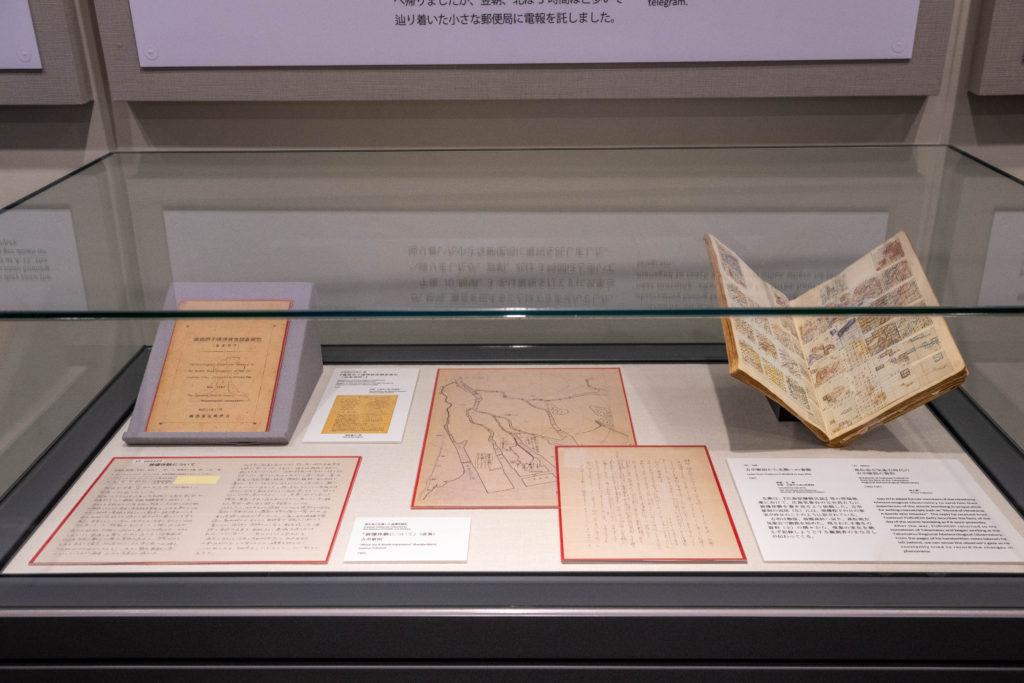
In addition to the video, the exhibition also features handwritten accounts of A-bomb victims and materials actually used by the meteorological office personnel.
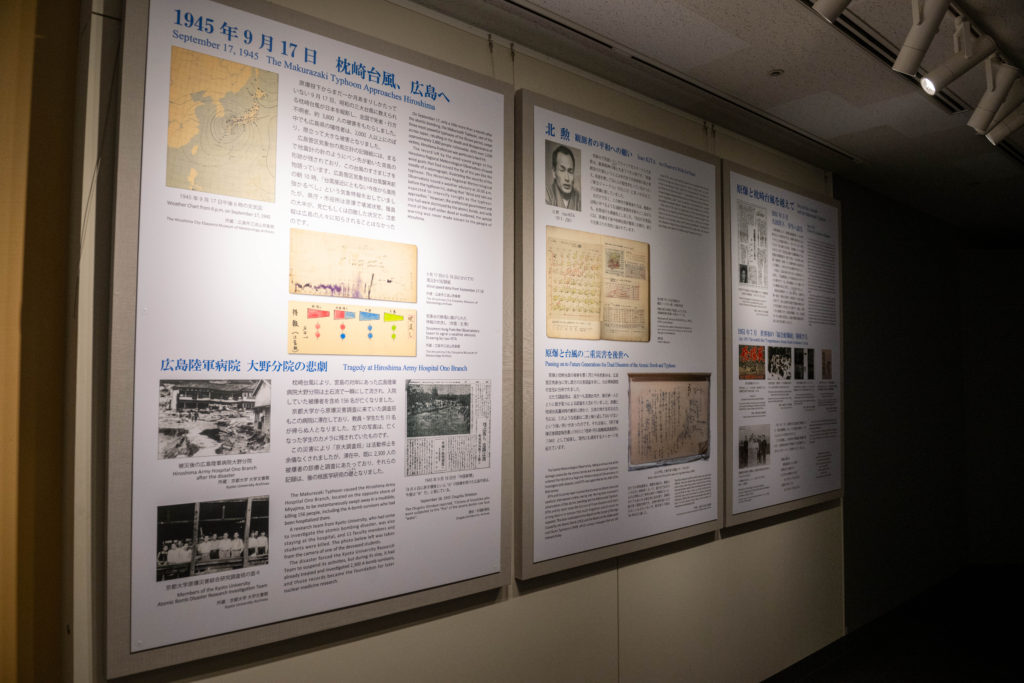
The content of the exhibition is explained in great detail mainly through graphics such as photographic materials.
Almost no one knew of the existence of damage reports of the atomic bombing and the subsequent Makurazaki Typhoon written by the meteorological office personnel who bore a strong sense of mission, partly due to the press code issued by the Supreme Commander for the Allied Powers (“GHQ”).*1 However, with the lifting of the occupation by GHQ in 1952, reports in which the meteorological office personnel painstakingly consolidated their findings finally saw the light of day. Don’t miss this opportunity to come and witness for yourself the resolute efforts of people who lived in those times and the things they risked their lives to tell us.
*1 Press code: A set of rules and regulations established by GHQ to control newspapers and other news media during the Allied Occupation of Japan in the aftermath of the Pacific War.
For inquiries, please contact:
Hiroshima National Peace Memorial Hall for the Atomic Bomb Victims
1-6 Nakajima-cho, Naka-ku, Hiroshima
082-543-6271
https://www.hiro-tsuitokinenkan.go.jp/
Opening hours: 8:30 a.m. to 6:00 p.m. (March to July, September to November)
8:30 a.m. to 7:00 p.m. (August) (8:30 a.m. to 8:00 p.m. on August 5th and 6th)
8:30 a.m. to 5:00 p.m. (December to February)
Closing days: December 30th and 31st
“A Blank in the Weather Map: The Hiroshima of the Weather Experts”
March 15th (Wed.), 2023, to February 29th (Thur.), 2024
Free admission
Tags associated with this article



